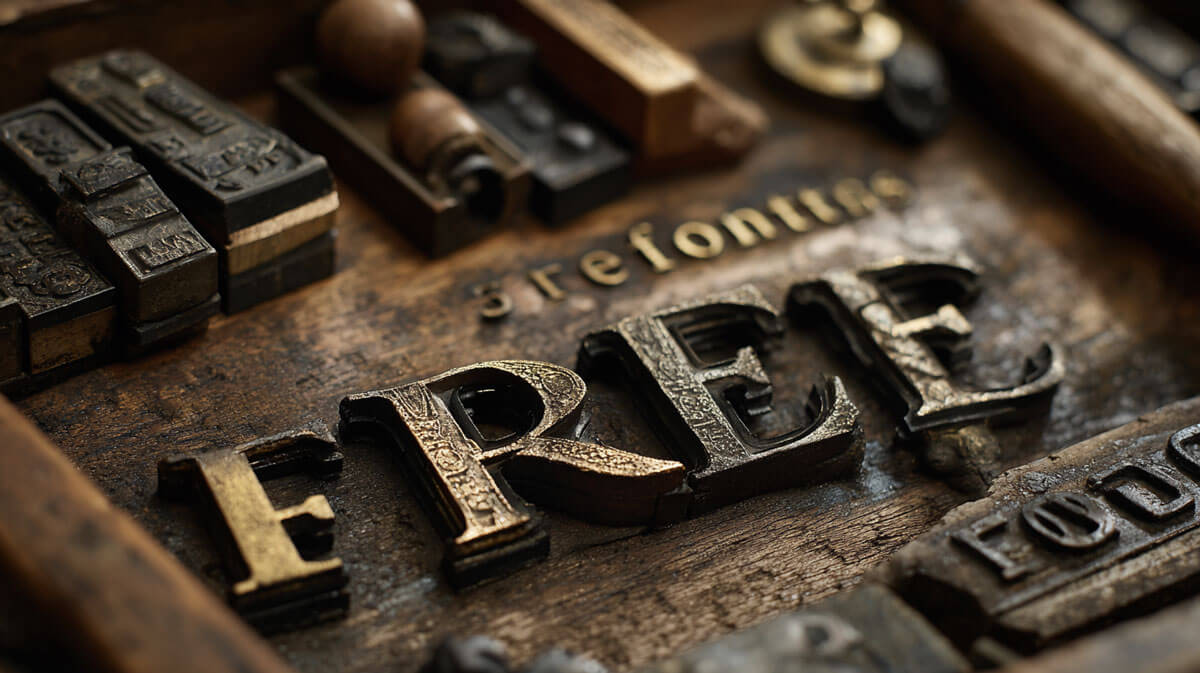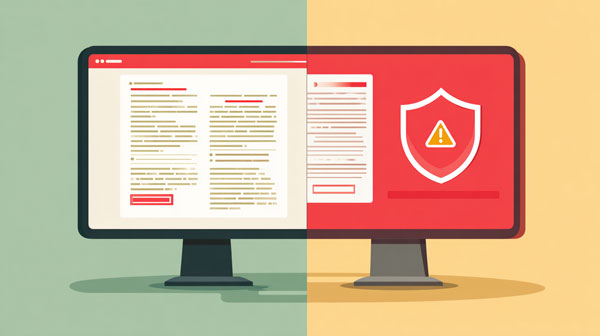
You found the perfect font for your project. It's free to download. You add it to your website, use it in client work, maybe even on product packaging. Then six months later, you get a cease and desist letter demanding thousands of dollars for unauthorized commercial use.
This happens more often than you'd think. The problem? "Free" doesn't always mean "free for commercial use." Many free fonts come with restrictions that make them illegal to use in business contexts. Understanding which fonts are actually safe to use can save you from expensive legal headaches down the road.
Let's break down exactly which free fonts you can use without worry, and which ones might land you in trouble.
What "Free for Commercial Use" Actually Means
When a font is labeled "free," it could mean several different things. Some fonts are free only for personal projects - things like school assignments, hobby blogs, or birthday invitations. The moment you use them for anything that makes money or promotes a business, you're violating the license.
Commercial use includes pretty much any business activity. Your company website, client projects, marketing materials, product designs, logo work, and even internal business documents all count as commercial use. If there's a business entity involved, you need commercial rights.
The only way to know for sure if a font is safe for commercial use is to check its license. This brings us to the various types of licenses you'll encounter.
Understanding Font Licenses: The Big Four
SIL Open Font License (OFL)
The SIL Open Font License is the gold standard for free commercial fonts. Created by SIL International, this license explicitly allows commercial use, modification, and distribution. You can use OFL fonts in any project, sell products with them, and even modify the font files themselves.
Google Fonts uses the SIL Open Font License for most of its library, which is why designers trust it for commercial projects. When you see OFL, you're good to go for virtually any use case. The only real restriction is that you can't sell the font files themselves as a standalone product.
Apache License
The Apache License is similar to OFL in terms of commercial freedom. Originally designed for software, it's also used for some font families. Apache-licensed fonts can be used commercially, modified, and distributed. Like OFL, you just can't sell the font files on their own.
Public Domain
Public domain fonts have no copyright restrictions whatsoever. These are typically very old fonts where the copyright has expired, or fonts explicitly released into the public domain by their creators. You can do absolutely anything with them - use them commercially, modify them, sell products with them, even sell the font files.
The catch? True public domain fonts are relatively rare. Many sites claim fonts are public domain when they're actually not, so verify carefully.
"Free for Personal Use Only"
This is where people get into trouble. Fonts marked "free for personal use" are not safe for business use, period. You'll find tons of these on popular free font sites, often with gorgeous designs that tempt you to use them in commercial projects.
Don't do it. These fonts require a commercial license purchase, which typically costs between $20 and $200 depending on the foundry. The designer is offering a free trial for personal projects, but expects payment for business use.
Where to Find Legitimate Free Commercial Fonts
Not all font websites are equally trustworthy. Some are careful about licensing, while others host fonts with unclear or violated copyrights. Here are the most reliable sources for truly free commercial fonts.
Google Fonts
Google Fonts is the safest bet for free commercial fonts. Every font in their library is open source and free for commercial use. You can download them, self-host them, use them in client work, sell products with them - no restrictions.
The library includes over 1,500 font families covering most design needs. Quality varies, but you'll find plenty of professional options. And because Google Fonts is so popular, you won't run into compatibility issues.
Note on GDPR: If you serve EU visitors, you should self-host Google Fonts rather than loading them from Google's CDN. A German court ruled that using the CDN violates GDPR by transferring visitor IP addresses to Google without consent. Read more about Google Fonts and GDPR compliance.
Font Squirrel
Font Squirrel curates high-quality fonts that are free for commercial use. Unlike many free font sites, they actively verify licenses before listing fonts. Their commercial use filter makes it easy to find safe options.
One caveat: Font Squirrel hosts fonts with various licenses (OFL, Apache, custom), so always check the specific license for each font. But if Font Squirrel says it's free for commercial use, you can trust that.
Adobe Fonts (with subscription)
If you have an Adobe Creative Cloud subscription, Adobe Fonts is included. You get commercial rights to thousands of professional fonts from major foundries. The fonts are technically not "free" since they require a subscription, but if you're already paying for Adobe CC, you have access with no additional cost.
One important note: your commercial usage rights end if you cancel your Adobe subscription. Projects using Adobe Fonts need an active subscription to remain legally compliant.
Fontshare
Fontshare offers professional-quality fonts completely free for commercial use. The collection is smaller than Google Fonts, but the quality is consistently high. These fonts are released by the Indian Type Foundry specifically for free commercial use.
Red Flags: Sites to Approach with Caution
Some popular free font sites have serious licensing issues. These sites often host fonts without proper authorization or with unclear licensing terms.
Dafont
Dafont is one of the most popular free font sites, but it's also one of the riskiest. The site hosts user-uploaded fonts with inconsistent licensing. Many fonts are marked "free for personal use" but people download them for commercial projects anyway.
If you use Dafont, you must carefully check each font's license and verify the designer's terms. Or stick to sites with clearer licensing policies.
1001 Fonts
Similar to Dafont, 1001 Fonts has inconsistent licensing and relies on user uploads. Some fonts are legitimately free for commercial use, while others definitely aren't. The site includes license filters, but the information isn't always accurate.
How to Verify a Font License
Before using any free font in a commercial project, take these steps:
Find the license file: Downloaded fonts should include a license.txt or readme file. Read it completely.
Check the foundry's website: Go directly to the font designer's or foundry's official site. Look for their licensing terms.
Look for explicit commercial use language: The license should specifically state "commercial use allowed" or similar wording. Vague language is a red flag.
When in doubt, ask: Email the font designer directly. Most are happy to clarify their licensing terms.
Keep documentation: Save copies of license files and any email correspondence. If questions arise later, you'll have proof of permission.
Common Misconceptions About Free Fonts
"If it's free to download, I can use it anywhere"
Wrong. Free download doesn't equal free commercial use. Many fonts are free for personal projects but require licenses for business use.
"Nobody will notice if I use it"
Font foundries actively monitor for unauthorized use. They use web crawlers and often receive tips from designers who recognize their fonts. Getting caught can result in settlements ranging from thousands to millions of dollars.
"I can modify a free font to make it okay"
Modifying a font doesn't change its license requirements. If the original font required a commercial license, your modified version does too. Some licenses (like OFL) allow modification, but others explicitly forbid it.
"Google Fonts might violate GDPR"
There's been confusion about this. A German court ruled that using Google Fonts via their CDN can violate GDPR because it exposes visitor IP addresses to Google. However, you can easily solve this by self-hosting Google Fonts on your own server. The fonts themselves are completely legal for commercial use - it's just about how you serve them.
Are Google Fonts completely free for commercial use?
Yes, all Google Fonts are free for commercial use with no restrictions. They're licensed under either the SIL Open Font License or Apache License, both of which explicitly permit commercial use. You can use them in client work, sell products with them, and modify them as needed.What does "free for personal use only" mean?
"Free for personal use only" means you can use the font in non-commercial projects like hobby blogs, school assignments, or personal invitations. Any business use - including company websites, client projects, marketing materials, or products you sell - requires purchasing a commercial license from the font designer.How can I tell if a font is safe for commercial use?
Check the font's license file (usually license.txt or readme.txt included in the download). Look for explicit language about commercial use permissions. Visit the foundry's official website to verify their terms. If you're unsure, contact the font designer directly or stick to verified sources like Google Fonts or Font Squirrel's commercial use section.Can I use free fonts in client projects?
Yes, if the font's license explicitly allows commercial use. Fonts with OFL, Apache, or similar open licenses are fine for client work. However, "free for personal use" fonts are not - you'd need to purchase commercial licenses for those. Always verify the specific font's license before using it in paid client work.The Bottom Line
Free fonts for commercial use definitely exist, but you need to be careful about where you find them and how they're licensed. Stick to trusted sources like Google Fonts, Font Squirrel's commercial section, and Fontshare for the safest options.
When in doubt, spending $30-50 on a proper commercial license is infinitely cheaper than dealing with a cease and desist letter or potential lawsuit. And if you're using fonts from less reputable sources, at least take the time to verify the license thoroughly.
Not sure which fonts are currently on your website or whether they're properly licensed? Scan your site with FontReport to get a complete breakdown of every font in use and identify any potential licensing issues before they become problems.
